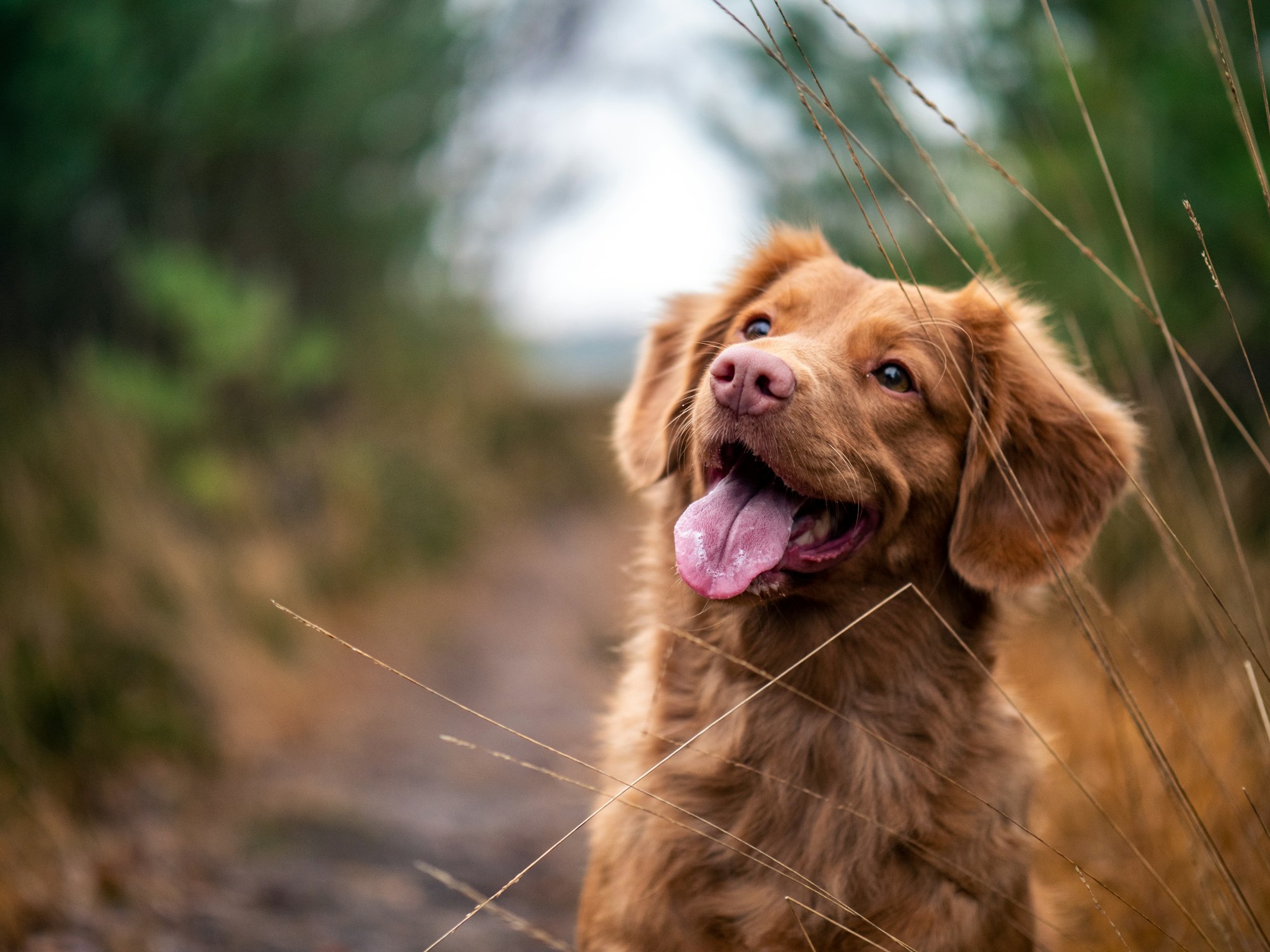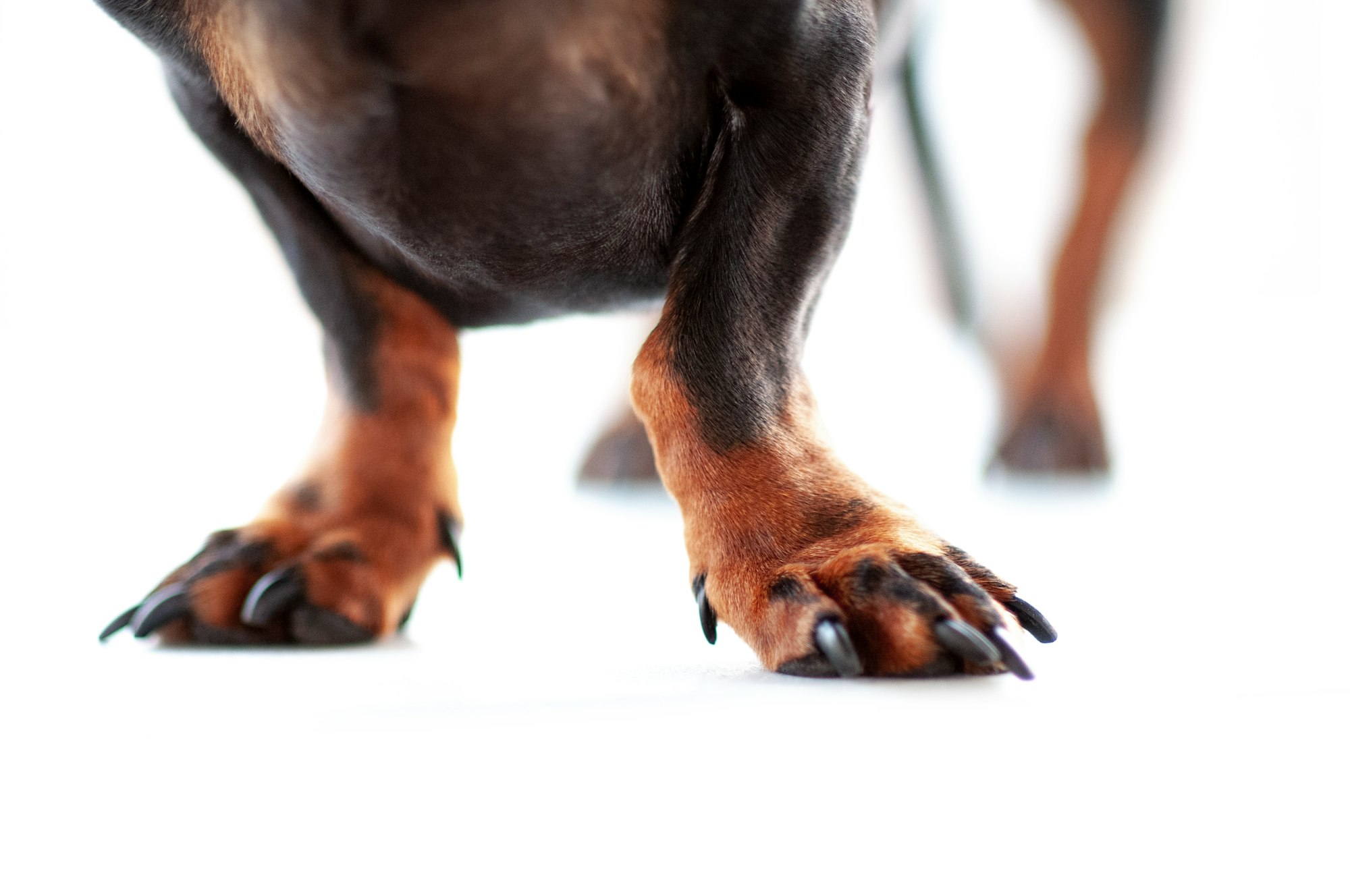There's a unique joy in the affectionate nuzzle of a dog, especially when it comes with those loving puppy kisses. But have you ever wondered why your dog seems to lick you every time you pet her? This seemingly simple gesture is packed with meaning, and it's more than just a way for your pup to say hello.
We aims to delve into the psychology and instinctive behaviors behind this common canine action. Whether it's a sign of affection, submission, or something else entirely, understanding this behavior can deepen the bond between you and your furry friend.

The Science Behind the Slobbery Affection
When you come home after a long day, your furry friend is likely the first to greet you, and often with enthusiastic licks.
But what does this mean?
Some scientists believe that this is a dog's way of tasting your skin to understand where you've been or what you've eaten.
Others think it's a sign of submission, or perhaps even affection.
Whatever the reason, one thing is sure: those puppy kisses have a lot more going on than just simple affection.
The Instinctive Behavior of Dogs
Puppy kisses may seem unique, but they're part of a broader instinctive behavior pattern in dogs.
They start as puppies, licking their mother's face to signal hunger.
As they grow, this behavior evolves into a social mechanism.
For example, my neighbor's dog, Max, always licks his human friends' faces.
Max's owners used an Electric fence for dogs to train him to stay in the yard, but the licking never stopped.
It's his way of saying hello and communicating affection.
The Connection to Human Behavior
Humans play a role in this behavior too.
We often reinforce the licking by smiling, laughing, or petting the dog more, which encourages them to repeat the behavior.
I remember a time when my sister was looking for GPS Dog Collars and stumbled upon a Non Squeaky Dog Toy.
She bought it for her pet, and as she was presenting the toy, her dog responded with joyful licks as if expressing gratitude for the new plaything.
Health Considerations
Not everyone appreciates the sloppy love, especially if they have concerns about hygiene.
This is where understanding the effects of licking comes in.
There is ongoing research on the health benefits and risks of puppy kisses.
While many claim it's harmless, others warn about the potential transfer of bacteria or parasites.
Choosing the right Dog Shampoos for Sensitive & Itchy skin might help in keeping your pet clean and reducing any risk from licking.
And for those who prefer a less messy expression of affection, there are always No Stuffing Dog Toys to keep your furry friend entertained.
Puppy Kisses as a Form of Communication
Dogs have an extraordinary ability to communicate with their human companions. Puppy kisses, those loving licks that often follow a petting session, are one of the most commonly recognized forms of this communication.
Consider the story of Bella, a rescue dog who used to live in a shelter. She was shy and would often cower away from human touch. After being adopted by a loving family, Bella gradually began to lick her new owners' hands. These were not just puppy kisses but signs of trust and comfort, a bridge of understanding built between two different species.
A Source of Comfort
Some dog owners believe that their pets lick them because it's comforting to the dog. Like a child sucking their thumb, licking can soothe a dog.
I've witnessed a scenario where a friend's dog, after being frightened by a thunderstorm, found solace by licking her owner's hand repeatedly. The connection was not one-sided; it comforted the owner as well.
Training to Control Licking
Puppy kisses can be adorable, but excessive licking may become a problem for some owners. How can one control or minimize this behavior without hurting the bond between human and pet?
Positive reinforcement is key here. Rewarding a dog with treats or affection when it behaves the way you want, and ignoring or redirecting undesired behaviors, can be effective.
Consider, for instance, the use of No Stuffing Dog Toys as a distraction from licking. These toys can provide an engaging alternative, helping to channel the dog's energy into a more desirable form of play.

Debunking Myths
There's a lot of misinformation surrounding the subject of puppy kisses. Some think it's all about tasting food remnants, while others believe it's a sign of dominance.
By understanding the true nature of this behavior, we can better appreciate the rich emotional life of our furry companions and foster a deeper connection.
The Role of Health and Hygiene
Maintaining good health and hygiene is essential for both pet and owner, especially when it comes to licking.
Regular grooming, using products like Dog Shampoos for Sensitive & Itchy skin, can help maintain your pet's health. Clean paws and a fresh coat can make puppy kisses a more pleasant experience for all involved.
Additionally, understanding the potential health risks and ensuring your pet's vaccinations are up to date will minimize any concerns about infections or diseases transmitted through licking.
The Language of Licking
For dogs, licking isn't just a random act. It's a complex form of communication that can mean many things.
Imagine a scenario where you are petting a friend's dog, and it begins to lick your hand. This might be the dog's way of saying, "I like you, and I want to be friends." It could also be asking for more attention or expressing its excitement about a new person in its life.
Every lick is like a word in a dog's language, and understanding this language can deepen our connection with our furry friends.
Puppy Kisses and the Alpha Debate
There was once a belief that dogs licked humans as a sign of submission. This was tied to the theory that dogs live in a strict alpha-beta hierarchy.
But recent studies have debunked this idea. The concept of an alpha dog has been largely dismissed by modern ethologists.
So, those puppy kisses are not about submission but more about affection, curiosity, or even just a way to get more delicious treats!
Can Licking Be Harmful?
Though we often perceive licking as a sign of love, it might not always be beneficial.
Excessive licking can lead to certain problems such as skin irritations or, in rare cases, the spread of zoonotic diseases.
A friend once told me about their dog, who had a habit of licking everyone's feet. While it was a funny quirk, it turned out to be indicative of a dietary deficiency.
Veterinary consultation and a proper diet solved the problem, reinforcing the importance of understanding the reasons behind our pets' behaviors.

Tools to Manage Dog Behavior
Beyond understanding why dogs lick, we can also explore various tools and techniques to manage this behavior.
For example, Electric fence for dogs can be a great way to keep your pet within boundaries, but it doesn't address the issue of licking. However, proper training and positive reinforcement can help in managing this behavior.
Incorporating toys like Non Squeaky Dog Toys or using accessories like GPS Dog Collars to monitor their activities are ways we can engage with our pets positively, helping us build a relationship that isn't solely focused on licking.
Embracing the Love of Man's Best Friend
Puppy Kisses: Why Does My Dog Lick Me When I Pet Her? The answer is multifaceted and rich in emotional and biological complexity.
Whether it's a lick on the hand after a long day at work, a slobbery kiss on the face in the morning, or a gentle lick of comfort when we're feeling down, these small acts from our furry friends are packed with meaning.
By understanding the whys and hows of this common canine behavior, we can enhance our relationships with our dogs, ensuring that the bond we share continues to grow and thrive.
And who knows? The next time your dog licks you, you might find yourself not just tolerating the wet embrace but celebrating it as a precious connection between two very different but loving beings.
Please let me know if you need further exploration or specific information!
Fi Dog Collars: The Next Generation of Bonding
In today's technological age, we are not just limited to traditional ways of understanding and interacting with our canine companions. Advanced tools like Fi dog collars are revolutionizing how we connect with our furry friends.
Fi dog collars are not just ordinary dog collars; they come equipped with modern GPS technology, allowing owners to keep track of their dogs' whereabouts. But what makes them stand out even more is their application in understanding dog behavior, including the mystery of Puppy Kisses: Why Does My Dog Lick Me When I Pet Her?
How Fi Dog Collars Can Enhance Understanding
Imagine being able to track how often your dog interacts with other pets and people. With Fi dog collars, this information is just a few taps away on your smartphone.
This can provide valuable insights into your dog's social behavior. Do they lick certain people more? Are they more affectionate in specific environments or times of the day?
Fi Dog Collars and Training
Fi dog collars can also play a role in training. By understanding your dog's movements and behaviors, you can tailor training to their specific needs.
For instance, if you notice that your dog tends to lick excessively when in a particular area of your home, you can use the insights gained from the Fi dog collar to address this behavior more effectively.
It's like having a behavioral expert with you at all times, helping you understand why your dog is giving you those puppy kisses and how to respond to them.
Safety and Peace of Mind
Beyond understanding and training, Fi dog collars offer an extra layer of safety. The GPS feature ensures that you always know where your dog is, providing peace of mind.
It's not just about preventing unwanted licking or knowing why your dog licks you when you pet her; it's about ensuring the overall well-being of your beloved pet.
Embracing a New Era of Canine Connection
The introduction of tools like Fi dog collars is a testament to how our relationship with dogs continues to evolve. It's not just about interpreting those loving licks or controlling behavior; it's about leveraging technology to foster a deeper, more nuanced connection with man's best friend.
By integrating these advancements into our daily interactions, we can elevate the understanding, training, and care of our pets to levels previously unattainable.
From puppy kisses to tracking movements, technology like Fi dog collars opens a new frontier in the loving relationship we share with our dogs, making every lick and wagging tail a part of a broader, richer story of companionship.
Please let me know if you have any more specific requests or need further details!
Conclution:
Puppy kisses, those delightful expressions of canine affection, are far more complex than mere slobbery love. From their scientific and emotional underpinnings to health considerations and training techniques, understanding why our dogs lick us offers profound insights into their world. Modern advancements like Fi dog collars further deepen our connection, allowing us to interpret, nurture, and protect our furry friends in ways previously unimaginable. Whether we view puppy kisses as pawsitive or problematic, embracing the multifaceted nature of this behavior enhances the unique and cherished bond we share with man's best friend.
FAQs:
Q: Why Does My Dog Lick Me When I Pet Her?
A: Dogs often lick their owners as a sign of affection, communication, or sometimes even to seek attention. It's a multifaceted behavior that can be influenced by their upbringing, environment, and individual personality.
Q: Are Puppy Kisses Safe for Humans?
A: Generally, puppy kisses are safe, but it's essential to maintain proper hygiene. Regular grooming and using products like Dog Shampoos for Sensitive & Itchy skin can minimize any risks associated with licking.
Q: How Can I Stop My Dog from Excessive Licking?
A: Positive reinforcement, distractions with toys like Non Squeaky Dog Toys, and consistent training can help control excessive licking. Tools like Fi dog collars can also provide insights into behavior and aid in training.
Q: What Does It Mean When My Dog Licks My Face?
A: Dogs may lick your face to show affection, seek attention, or even as an instinctual grooming habit. Understanding your specific dog's reasons might require observation and possibly consultation with a behavioral expert.
Q: Can Fi Dog Collars Help Me Understand My Dog's Licking Behavior?
A: Yes, Fi dog collars with GPS technology can track your dog's movements and interactions, providing valuable insights into behavior patterns, including licking. It's a modern tool that can enhance understanding and training.
Q: Is Licking a Sign of a Dog's Submission?
A: While it was once believed that dogs licked humans as a sign of submission, modern studies have shown that licking is more often about affection, curiosity, or seeking attention rather than submission.
Q: Are There Any Products to Help Manage My Dog's Licking?
A: Yes, from No Stuffing Dog Toys to Electric fences for dogs and Fi dog collars, there are various tools and products available that can be used to manage or understand licking behavior.
Q: Should I Be Worried If My Dog Licks Certain Objects or People More?
A: While it might be a simple preference or habit, excessive or selective licking can sometimes indicate underlying issues, such as dietary deficiencies or behavioral concerns. Consulting with a veterinarian or behaviorist may be helpful.

